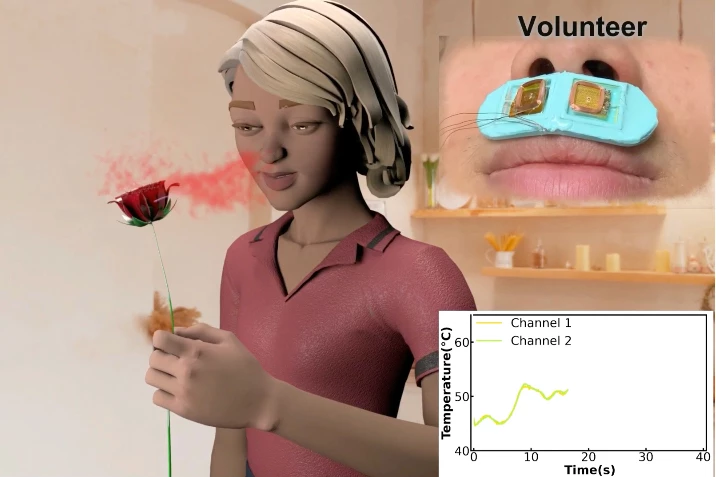While we've seen multiple attempts to produce real-world odors in VR environments, many have involved rather cumbersome wearable devices. Chinese scientists have developed a much more streamlined system, which is applied to the skin below the user's nose.
The base version of the experimental setup incorporates two small devices known as odor generators (OGs). These are both mounted on a single piece of lightweight flexible substrate material, which is temporarily adhered to the skin above the user's upper lip.
Each OG contains a differently scented paraffin wax, along with a thermal actuator. When wirelessly activated by an accompanying VR system, the actuator in one or both of the OGs heats the wax and causes it to melt (slightly), thus releasing its odor. When the actuator is shut off, the wax cools and returns to its solid state, in which it produces little if any scent.

In a more complex version of the system, a total of nine OGs – each one of a different odor – are incorporated into a flexible face mask. These can be activated in hundreds of different combinations and ratios, producing a wide variety of scents.
The scientists have created about 30 different scents so far, including rosemary, pineapple, fresh-baked pancakes and stinky durian fruit. In lab tests, 11 volunteers accurately recognized scents generated by the system with an average success rate of 93%.
"The new olfaction systems provide a new alternative option for users to realize the olfaction display in a virtual environment," said City University of Hong Kong's Dr. Yu Xinge, who led the study along with Dr. Li Yuhang from Beihang University. "The fast response rate in releasing odors, the high odor generator integration density, and two wearable designs ensure great potential for olfaction interfaces in various applications, ranging from entertainment and education to healthcare and human-machine interfaces."
A paper on the research was recently published in the journal Nature Communications.
Source: City University of Hong Kong




